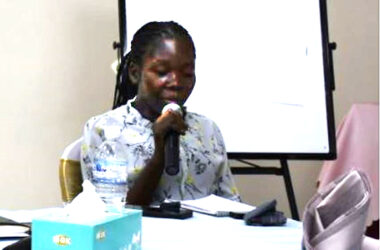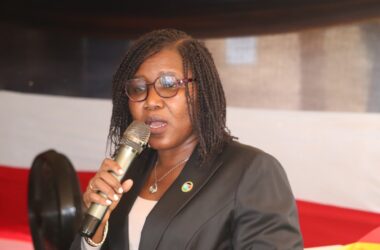By Philip Buda Ladu
A new Integrated Food Security Phase Classification (IPC) warns that an estimate of 13.4 million South Sudanese population will face acute food insecurity through next year.
The joint report released on Monday by the government and development partners on Monday reveals a deepening hunger crisis in the Country.
“The latest IPC findings are telling us that the situation which has started improving as per the last IPC report is now starting to decline again,” said Josephine Lagu, Minister of Agriculture and Food Security.
“Top of the reason being drivers of this deterioration is the high prices that are making adequate food out of reach for almost 60% of the households in our country. This is compounded by other factors such as low agricultural production, the effects of the Sudan crisis among others,” she added.
According to the report, projected 6.3 million – people (47 percent of the population analyzed) are experiencing high levels of acute food insecurity, classified in IPC Phase 3 or above (Crisis or worse) between September and November 2024.
Out of this total, 1.71 million people are facing critical levels of acute food insecurity –IPC Phase 4 (Emergency).
Furthermore, 41,000 people are facing catastrophic levels of acute food insecurity or IPC Phase 5 (Catastrophe).
The population in Phase 5 (Catastrophe) includes 10,000 people in Malakal County, Upper Nile State and an estimated 31,000 South Sudanese returnees who have fled Sudan because of the ongoing conflict.
Meanwhile, compared to the same period last year, this indicates an increase of approximately 500,000 people in Phase 3 or above.
The nutrition situation has also deteriorated, with an estimated 2.1 million children aged 6-59 months suffering or expected to suffer, elevated levels of acute malnutrition between July 2024 and June 2025, including 650,000 cases of Severe Acute Malnutrition (SAM).
About 1.11 million pregnant or breastfeeding women (PBW) are also suffering or expected to suffer elevated levels of acute malnutrition in the same period.
An estimated 67 percent of the acute malnutrition burden is concentrated in the five states of Jonglei, Northern Bahr el Ghazal, Upper Nile, Unity and Warrap.
The report states that returnees fleeing the ongoing conflict in Sudan are particularly vulnerable, with over 85% expected to be acutely food insecure in the 2025 lean season.
These individuals, struggling to rebuild their lives amidst economic hardship, severe flooding, and limited resources, face the highest risk of catastrophic hunger.
“Year after year we see hunger reaching some of the highest levels we’ve seen in South Sudan and when we look at the areas with the highest levels of food insecurity, it’s clear that a cocktail of despair – conflict and the climate crisis – are the main drivers,” said Mary-Ellen McGroarty, Country Director and Representative for the United Nations World Food Programme (WFP) in South Sudan.
Children are also disproportionately affected by the crisis with nearly 2.1 million children at risk of malnutrition, a significant increase from the previous year. Malnutrition is being exacerbated by poor sanitation, waterborne diseases, and food insecurity.
“Malnutrition is the end result of a series of crises, most notable for South Sudan is ongoing poor sanitation and prevalence of waterborne diseases, alongside severe food insecurity.
UNICEF is deeply concerned that the number of children and mothers at risk of malnutrition will continue to increase unless efforts to prevent malnutrition by addressing its root causes are scaled up, alongside the provision of immediate nutrition support to treat malnutrition among children who are at higher risk of death,” said Ms. Hamida Lasseko, UNICEF Representative in South Sudan.
The IPC report attributes the worsening food security situation to a combination of factors, including the Economic Crisis where rising food prices and economic instability have eroded the purchasing power of many South Sudanese.
It also noted that severe flooding and prolonged dry spells have disrupted agricultural production and livelihoods.
Ongoing conflict and displacement continue to displace communities and hinder access to food and resources.
Aid organizations are urging the international donor community to increase support for the South Sudanese local population. They emphasize the need to address the root causes of hunger, including conflict, climate change, and economic instability.
The aid agencies emphasized that to mitigate the crisis, it is crucial to provide humanitarian assistance, support livelihoods and agriculture, address climate change, and promote peace and stability by supporting peace-building efforts and addressing underlying causes of conflict.
“The emergence of the economic crisis and associated high food prices as a key driver of food insecurity sends a powerful message that it is time to collectively increase our investment in supporting South Sudanese to produce their own food,” said Meshack Malo, Country Representative of the Food and Agriculture Organization of the United Nations (UNFAO) in South Sudan.
Without immediate and sustained action, the humanitarian situation in South Sudan is likely to deteriorate further, with devastating consequences for millions of people.




